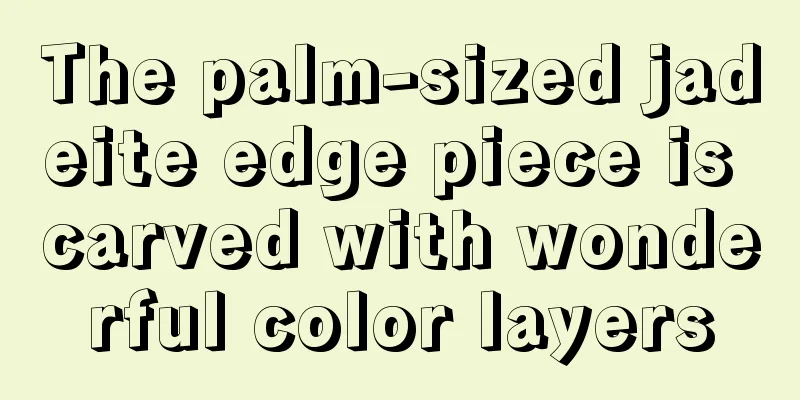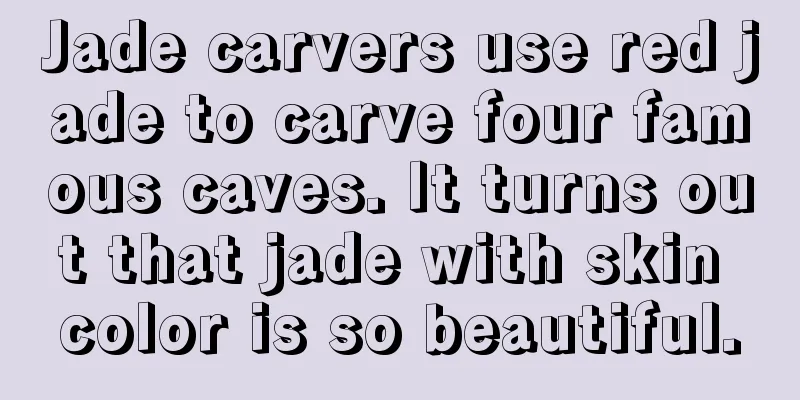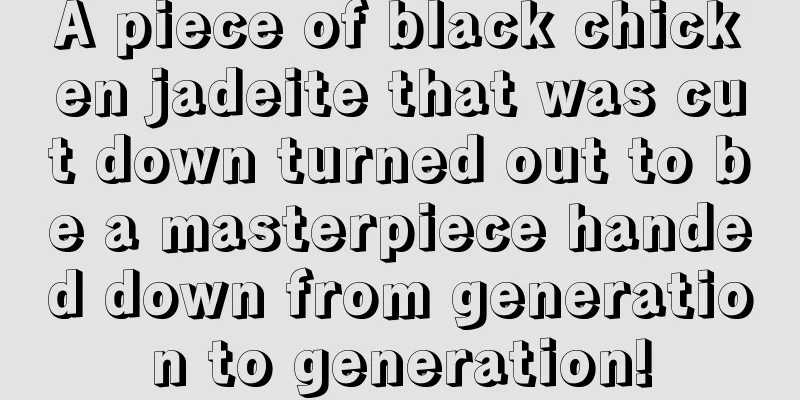Learn how to identify the authenticity of A-grade and B-grade jadeite and increase your knowledge!

|
Jade has ever-changing colors, different quality of water, and different polishing effects. Jade identification is a very profound subject, and it can be said that you can learn it until you die. However, at the very least we must know how to identify AB materials. Make sure you don't buy fakes. 1. Here are two bracelets. The edges, water quality and color are all different. Can anyone tell which one is real and which one is fake? The editor tells you that actually these two items are B-grade goods. Are you surprised? Many people tend to take those ugly and colorless jades lightly. These two look like A-grade products on the surface, but actually, they are not! Many people understand A-grade jade, which is pure natural jade. B-grade jadeite refers to jadeite that is artificially made by boiling low-grade A-grade material with acid, adding color and extracting impurities from the material. Such things cannot stand the test of time and will slowly develop cracks and turn yellow. It also has adverse effects on human health. Polished B-grade products are easier to identify: 1 First look at the surface gloss, scattered, blurry, without glass light. If you look closely, you can see tiny pits on the surface. 2 Secondly, look at the color (of course, this requires products with added color). The color should be evenly distributed and flow on the surface. There is no gradient form. It feels like a sudden intrusion, a wild and rough color. In this case, we must pay special attention to its authenticity. For example, when you hold it in your hands, you will find that grade A goods are definitely heavier than grade B goods. It feels heavy in the hand. B goods do not have this. Listen, the two bracelets gently hit each other. The sound is crisp and crisp. The sound of B-grade products is dull and short. Like the sound of plastic parts colliding. (Be careful with the impact. If it breaks, don’t blame me.) 2. B-goods that have not been processed and polished are more difficult to distinguish. Even the most experienced craftsmen have their moments of difficulty. Put two pieces of material below. Which one is real and which one is fake? Please point it out friends. Two small pieces of material, the one on the left is fake, the one on the right is real To put it bluntly, the simplest, crudest and most inhumane way to identify AB materials is to grind them with a machine! A material has high density and is hard. It feels obvious that it's hard to hit with the tool. b material, loose. The tool goes in effortlessly. And there is a pungent chemical smell. It's disgusting. This method is not suitable for everyone. fcgc66 fcpf18 |
<<: How to identify "B-grade" jade products
>>: To distinguish B and C grade jadeite with naked eyes, just look at these three points
Recommend
Show a more refined self, these jade jewelry can not be worn casually
There are many types of jade jewelry, the most co...
Many people complained that the jadeite raw stones their friends bought were waste, but they were slapped in the face when the finished product came out!
Walking into the jade market on the Myanmar borde...
From ancient times to the present, the elders have always preferred jade, which is related to this culture.
From ancient times to the present, most elders li...
How harmful is fake jade? Did you know? Which is more dangerous, fake or artificial?
First of all, we should say that there are two ty...
How should we choose violet jadeite which easily “dies in the light”?
Violet jade can be said to be the most romantic o...
What kind of jade is good jade?
Chinese people have had a special fondness for ja...
A lotus leaf fish is carved from a piece of jadeite full of cracks. The finished product is very pleasing
When many people first start playing with jade, t...
The Four Beauties of Jadeite
It is recorded in ancient books: "Appreciate...
Lotus is often used in jade carvings. What does it mean?
There is an old saying in the jade industry that ...
What is the significance of playing with jade hand-held pieces? What is the connotation of jade hand-held pieces?
When people play with jade, through continuous to...
The process of carving a dragon-headed Guanyin from ice-type sheet material, the water output will definitely make you unable to extricate yourself!
This is a piece of Moshisha material. The materia...
The meaning of violet jade is beautiful and unique, and women love it.
In the jade world, there is a special variety - v...
A piece of cracked wood that has been sanded off. I didn't expect that after cutting it
Today I want to tell you about this piece of mate...
The story between jade and people
Wearing jade for a long time can not only improve...
Is the round jade landscape plaque better or the square jade landscape plaque?
This is a subjective question, as the beauty of j...









